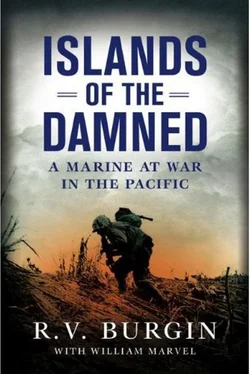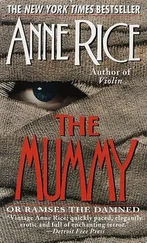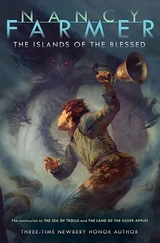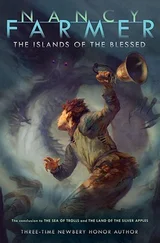For thirty-five years I pushed the war out of my mind. I never talked about it to anyone, period. There were two or three Marines that worked down at the Post Office. Sometimes we’d joke about the funny things that had happened. But we never really talked about the war. I just held it all back.
In 1979, I got a phone call. Stumpy Stanley, our old company commander, Bill Leyden and a few others from the First Marine Division had been sitting in a New York bar having a drink. One of them said, “We should get everybody together again.” Before they split up, each promised to call other Marines he knew from the war and pass the word along. When the call came around to me, I started calling the guys I knew. I’d kept up with Jim Burke, of course. He was living in Clinton, Iowa. I remembered John Redifer lived in Portland, Oregon. Marmet lived in Ohio. Tom Matheney lived in Monterey, Tennessee. When I didn’t know their number, I called information. And so it went until I’d found twelve people.
In 1980 twenty of us from K Company went to the Marine Association First Division reunion in Indianapolis. Gene Sledge was there, Mo Darsey, our old gunny sergeant. Johnny Marmet. Tom Matheney. The whole crowd. Guys I had spent months and even years with, guys I had fought alongside.
We’d sit around and talk. One of them would say, “Hey, Burgin, do you remember the day such-and-such happened?”
I’d say, “No, I don’t remember that.”
And they’d say, “You ought to. You were there.”
They’d talk about how this happened, how that happened. Go into details about what went on. I’d just sit there.
Then, all of a sudden it would flash through my mind, and I could see it again as plain as day.
I started attending the reunions every year after that.
At the 1983 reunion, Stumpy Stanley said to me, “I talked to Jim Kornaizl the other day. He said to tell you hello.”
“Who? You talked to who?”
“Jim Kornaizl.”
“I don’t know a Jim Kornaizl.”
“He sure knows you. That’s for sure.”
It bugged me after that that I could not recall Jim Kornaizl. The next year, 1984, we held our reunion in Milwaukee.
A guy was coming down the hallway toward me in the hotel. The moment I saw him, it all came back. The flash of the shell. He and T. L. Hudson on the ground, wounded, and Kornaizl twitching from head to foot.
Why I had put that out of my head I do not know. I had remembered Hudson getting hit. But not Kornaizl.
We talked for a while. He had spent eighteen months in the hospital. They had put a steel plate in his skull, and when he started having convulsions again they opened him up and cleaned it out and put in another steel plate.
Within a few years I got to the point where I could talk about the war any time, any place, with anybody. It got me thinking: This needs to be told, what we went through.
Florence and I had the air-conditioner man out to the house the other day for a little preseason maintenance. He was looking at the pictures on my wall, at my KA-BAR in its frame, at the flag and the Bronze Star I got in 1946.
I asked him if he’d ever heard of Peleliu.
No, he’d never heard of Peleliu.
I didn’t figure he had. I told him we’d had sixty-five hundred casualties in thirty days on that little island. I didn’t tell him about the flies and the maggots and the rot, the bad water and heat and caves, about how you never knew where the next bullet was going to come from.
The big famous battles—Iwo Jima, Guadalcanal, Okinawa. Everybody’s heard about them. Nobody’s heard of Peleliu. They don’t teach history anymore.
So I made up my mind to teach it. There’s only a few of us left who know anything about Peleliu. When we started our reunions we had 250 on our roster. Now we’re down to forty. We lost five since our last reunion. Only a few of us are left who remember. We have to tell the stories, so this and future generations will know what happened. So it doesn’t get forgotten.
* * *
What sticks with me now is not so much the pain and terror and sorrow of the war, though I remember that well enough. What really sticks with me is the honor I had of defending my country, and of serving in the company of these men. They were good Marines, the finest, every one of them. You can’t say anything better about a man.
Semper Fi!
OVERVIEWS
Costello, John. The Pacific War 1941-1945. Perennial/HarperCollins, New York City, 1981.
Dear, I. C. B., general editor, and Foot, M. R. D., consultant editor. The Oxford Companion to World War II. Oxford University Press, Oxford, England, 1995.
Hammel, Eric. Pacific Warriors: The U.S. Marines in World War II, A Pictorial Tribute. Zenith Press/MBI Publishing Company, St. Paul, Minnesota, 2005.
McMillan, George. The Old Breed: A History of the First Marine Division in World War II. Zenger Publishing Company, Washington, D.C., 1949/1979.
Rottman, Gordon L. U.S. Marine Rifleman 1939-1945. Warrior Series #112. Osprey Publishing, Midway House, West Way, Botley, Oxford, England, 2006.
NEW BRITAIN AND CAPE GLOUCESTER
Bielakowski, Alexander M. “New Britain” in World War II in the Pacific: An Encyclopedia. Garland Publishing, Inc. New York City, 2001.
Hough, Major Frank O., USMCR, and Major John A. Crown, USMCR. The Campaign on New Britain. Historic Division, Headquarters, U.S. Marine Corps, Washington, D.C., 1952.
Miller, John, Jr. Cartwheel: The Reduction of Rabaul. United States Army in World War II. Office of the Chief of Military History, Department of the Army, Washington, D.C., 1959.
Nalty, Bernard C. Cape Gloucester: The Green Inferno. Marines in World War II Commemorative Series. Marine Corps Historical Center, Washington, D.C., 1994.
PELELIU AND PAVUVU
A&E Television Networks. Our Century: The Bloody Hills of Peleliu. The History Channel, 1995 (DVD).
Camp, Dick. The Last Man Standing: The 1st Marine Regiment on Peleliu, September 15-21, 1944. Zenith Press/MBI Publishing Co. Minneapolis, Minnesota, 2008.
DeHart, Bruce. “Palau” in World War II in the Pacific: An Encyclopedia. Garland Publishing, Inc. New York City, 2001.
Faith, William Robert. Bob Hope: A Life in Comedy. G. P. Putnam’s Sons, New York City, 1982.
Hallas, James H. The Devil’s Anvil: The Assault on Peleliu. Praeger, Westport, Connecticut, 1994.
Hope, Bob, with Linda Hope. My Life in Jokes. Hyperion, New York City, 2003.
Hough, Major Frank O., USMCR. The Assault on Peleliu. Historic Division, Headquarters, U.S. Marine Corps, Washington, D.C., 1950; reprint: The Battery Press, Inc., Nashville, Tennessee, 2000.
MacMillan, George. “They Called It a Rest Camp: The First Marine Division on Pavuvu.” Harper’s , October, 1949, pp. 36-45.
Moran, Jim, and Gordon L. Rottman. Peleliu 1944: The Forgotten Corner of Hell. Campaign Series #110. Osprey Publishing, New York City, 2002.
Phillips, Sidney C., M.D. “You’ll Be Sor-ree!” Artcraft Press, Mobile, Alabama, 2001.
Pollins, Perry. Tales of a Feather Merchant: The World War II Memoir of a Marine Radioman. Merriam Press, Bennington, Vermont, 2008.
Sledge, E. B. With the Old Breed at Peleliu and Okinawa. Ballantine Books, New York City, 2007.
Wright, Derrick. To the Far Side of Hell: The Battle for Peleliu, 1944. University of Alabama Press, Tuscaloosa, Alabama, 2005.
OKINAWA
Leckie, Robert. Okinawa: The Last Battle of World War II. Viking Penguin, New York City, 1996.
Читать дальше











